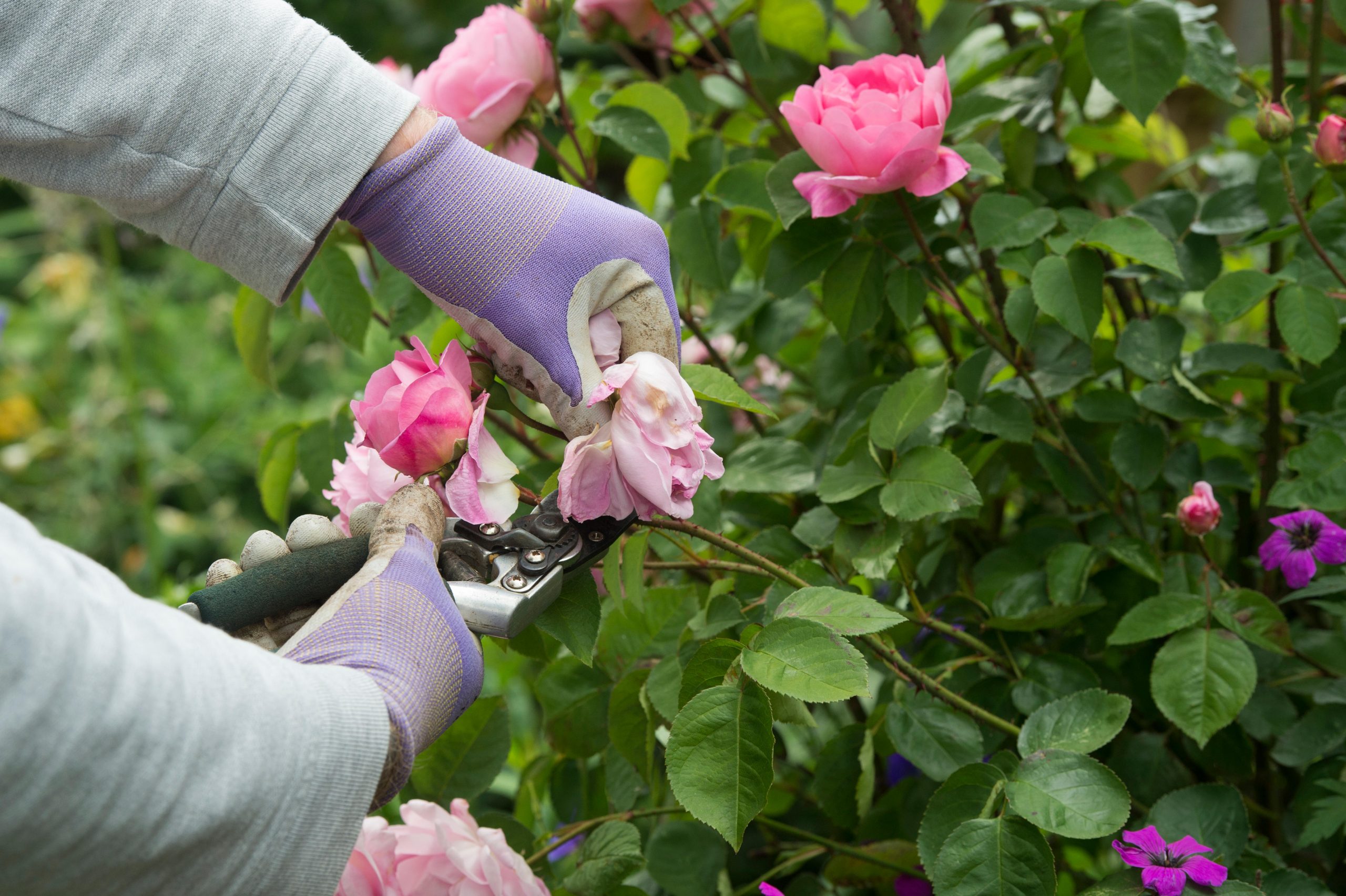What to deadhead and what to leave alone
We delve into the Country Life archive to revisit Mark Griffiths's tips on deadheading — and in particular being careful about what you take and what you leave.

Rosemery Verey was fond of saying that a garden without regular deadheading was like a woman with ill-kempt hair. I once watched her say this to a party of East Coast millionairesses, every one of whom instantly touched her own immaculate coiffure. Having reassured themselves, they all nodded in agreement. Today, the erstwhile mistress of Barnsley House would find herself out of fashion.
Deadheading, it seems, has become yet another divisive issue in the greening of our gardens. As well as going soft on pests and diseases, being stingy with food and water, and brooding endlessly over one's compost, not dead-heading has become an article of faith for the horticultural bien pensant. As with so many of their shibboleths, the environmental argument in favour of letting things run to seed is pretty thin.
There is scant evidence that wildlife benefits much from a diet of exotic garden grains, and rather more to support the idea that some seeds may be harmful. Why, anyway, should we let the politicos and developers off the hook, by agreeing that our gardens can do what is properly the job of the countryside?
So it was with care that I considered the question 'what should I deadhead?' asked recently by a friend who is possessed of a new garden. However, the answer seemed strangely obvious: deadhead everything, except plants whose fruit or seedheads you like and those whose seeds you'll need.
"Many of these are strikingly beautiful in death"
The first group is a matter of personal taste, but in it I place species roses such as Rosa moyesii and R. rugosa with spectacular hips; peas such as Baptisia australis and the shrubby Colutea orientalis, the one with leaden black pods, the other with coppery bladders; Phlomis russeliana with its tiers of whorled parchment calyces; umbellifers such as bronze fennel whose spokes have a ghostly beauty when bedewed and cobwebbed in autumn.
Also artichokes and thistles such as Cynara cardunculus and Centaurea benoistii, and grey-leaved semi-succulent spurges such as Euphorbia rigida whose flowerheads assume coral tints with age. Special mention goes to the Himalayan lily Cardiocrinum giganteum, a shade-loving monster whose 8ft flower spikes are transformed into a forest of poles bearing upturned beaky pods on snaking stems. These split to reveal formidable teeth as if, by some Olympian intervention, Hydra had been made to twist itself and turned to wood.
Such are the oddities, the solitary or sporadic specimens whose deadheads or seedheads I cherish long after the bloom has blown. To them we can add an entire class of late summer and autumn flowering perennials chiefly ornamental grasses and prairie daisies, which nowadays are often grown together. Many of these are strikingly beautiful in death, and especially when rimed with frost and caught by wintry sunlight. I tend not to go near them with the secateurs until they look dreadful.
Exquisite houses, the beauty of Nature, and how to get the most from your life, straight to your inbox.
The second group consists of plants whose seeds you wish to collect for future sowings, or plants that you allow to sow their seed themselves. These are mainly annuals and biennials. In late summer and autumn, those that exercise me include iridescent Grecian honeywort (Cerinthe major Purpurascens), tomato red horned poppy (Glaucium corniculatum), teasel (Dipsacus fullonum), burgundy Angelica gigas, various love-in-a-mist (Nigella) and Galactites tomentosa, a charming miniature thistle in silver and lilac.
"It remains one of the best ways of maintaining floriferousness, vigour, order and hygiene"
I let the plants seed themselves to ensure a continuing colony, or gather the seeds for keeping and sowing elsewhere. The same applies to one or two perennials: earlier in the year, for example, I may let a few hellebores set seed if they promise interesting offspring, staying my deadheading hand until summer.
All of which sounds as if we did no deadheading at all, as if on the Rosemary Verey hairdo scale, our garden would measure somewhere between Struwwelpeter and Grendel's mother. Believe me, we do a great deal of deadheading. For us, it remains one of the best ways of maintaining floriferousness, vigour, order and hygiene.
As I told my friend: only avoid deadheading if you want more of a plant or if you like the sight of it in déshabillé. Anything else is strictly for the birds. This article first appeared in COUNTRY LIFE magazine on October 5, 2006